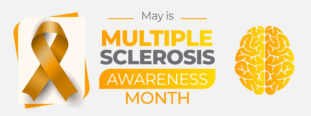Rare cases of stroke reported with Lemtrada
The U.S. Food and Drug Administration (FDA) has issued a warning about a risk of stroke and artery damage in people with multiple sclerosis who have taken Lemtrada. The announcement was issued on November 29, 2018 and a black-box warning was added to the U.S. product label. The Canadian product monograph had not been updated at the time of writing.
Lemtrada (alemtuzumab) was approved by the FDA as an MS drug in 2014. Since that time, 13 cases of ischemic (caused by blockage) and hemorrhagic (caused by a rupture) stroke or arterial dissection (a tearing of the artery wall) have been identified worldwide by the FDA. Ten cases occurred in the U.S. and three cases in Europe. Additional cases have been reported by the FDA in people with blood cancers who have received alemtuzumab (under the brand name Campath).
In 12 of 13 cases, the symptoms occurred within a day of receiving a Lemtrada infusion. It hasn’t been established that Lemtrada was the cause of the problem; the FDA warning was issued in case there is a link. The estimated risk of a stroke event with Lemtrada is roughly 3 cases per 1000 people treated.
It isn’t known how Lemtrada would damage the lining of blood vessels. The FDA speculated that the problem may be due to a cytokine release syndrome. When alemtuzumab is infused into the blood stream, the drug rapidly eliminates immune cells, which then release cytokines (signalling proteins) that promote inflammation. This effect is the reason why most people taking Lemtrada experience infusion reactions, such as fever, headache, rash, a temporary worsening of neurologic symptoms and a feeling of malaise, in the weeks after their treatment course.
People who have recently taken Lemtrada (within the past 1-3 days) have been advised to seek emergency medical treatment as soon as possible if there are symptoms of stroke. Symptoms may include a sudden severe headache or neck pain; sudden numbness or weakness in the face, arms, or legs (especially if only one side of the body); sudden confusion; difficulty speaking or understanding speech; sudden trouble seeing in one or both eyes; or sudden trouble with walking, dizziness, or loss of balance or coordination.
Share this article
Facebook Twitter pin it! Email
Related Posts
Back





